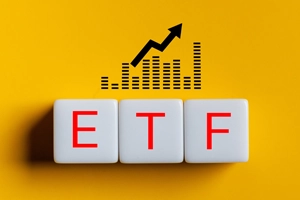
Gold and silver are widely used for portfolio diversification. You can allocate a portion of your total portfolio to investments in gold and silver, which may offer the potential for growth while also helping to lower overall risk. However, in the current age, investing in gold and silver requires a more modern approach, such as through Exchange-Traded Funds (ETFs). Let us explore gold and silver ETFs in greater detail and find out who wins in the gold ETF vs silver ETF face-off.
What is a gold ETF?
An ETF is a collection of multiple securities, such as stocks, bonds, etc., that are traded on the stock market. A gold ETF specifically tracks the price of domestic physical gold. It invests primarily in gold bullion, with each unit of a gold ETF typically representing one gram of gold. These units are backed by physical gold of very high purity, usually 99.5% pure gold bars.
Gold ETFs are listed and traded on the Bombay Stock Exchange (BSE) and the National Stock Exchange of India (NSE).
What is silver ETF?
A silver ETF invests in silver bullion and aims to track the performance of silver prices. Similar to gold ETFs, the units of a silver ETF are traded on stock exchanges and can be bought and sold like normal stocks. These funds invest in physical silver bars with a purity of 99.9%. When you purchase a unit of a silver ETF on the exchange, it typically represents approximately one gram of silver.
Differences between gold and silver ETFs
Here are some differences between a gold and silver ETF:
- Performance
Gold ETFs may generally provide steady, long-term growth and are considered a stable investment. Gold’s historical performance has been buoyant during market downturns, which makes it a reliable hedge against volatility.
Silver ETFs may offer the potential for higher short-term gains. They can outperform gold during periods of rapid economic expansion or when industrial demand for silver spikes. That said, silver’s price movements tend to be more unpredictable.
- Risk
Gold ETFs are less influenced by industrial cycles and are instead primarily driven by broader macroeconomic factors such as inflation and currency movements. Although gold is widely used in jewellery, coins, and other artefacts, it does not have the same level of price sensitivity to industrial demand as silver does. Additionally, gold ETFs tend to have a lower correlation with stock market movements, too, which makes them a comparatively safer investment.
Silver ETFs are more sensitive to shifts in economic growth and industrial activity as they are used in sectors like solar panels, electric vehicles, medical devices, and electronics. Since they are reliant on industrial demand, they are more likely to experience price fluctuations and be affected by market volatility.
- Investment strategy
Gold typically performs well during periods of market fear and volatility. So, you can consider investing in them during times of financial uncertainty to stabilise your overall portfolio. Gold ETFs can also be used to counter inflation.
Silver can also be a safe haven during uncertain times. However, it sees major price impacts from shifts in industrial demand. Silver prices can rise sharply when industries like green energy and technology do well. However, if industrial demand slows down, silver prices may also fall. Therefore, it is important to be prepared for greater price swings when investing in silver ETFs and monitor these sectors well.
- Cost
The cost of investing in gold ETFs tends to be higher, primarily because the price of gold itself is significantly higher compared to other precious metals.
Silver, on the other hand, although also classified as a precious metal, is much more affordable. Silver ETFs can be a more reasonably priced investment, making it easier to invest in them.
Having said this, with the option of Systematic Investment Plans (SIPs), investing in either gold or silver ETFs has become more accessible. You can consider a gold ETF SIP or a silver ETF SIP based on your investment budget. However, the number of units you own will vary depending on the cost of each metal at the time of investment.
Gold ETF vs silver ETF - Which one is right for your investment?
Both gold and silver ETFs can be suitable for diversifying your investment portfolio. They provide exposure to different markets and can help reduce overall risk.
Gold tends to be more stable over time, which makes it a safe haven against inflation as well as during periods of market uncertainty. However, the higher cost of investing in gold can make it harder for you to invest.
Silver, on the other hand, is more affordable. However, it tends to be more volatile, and the risk associated with silver can be higher, especially given its sensitivity to industrial demand.
It is important to weigh their pros and cons and then make a decision.
Conclusion
Gold and silver ETFs can both be good tools for diversification. They can also offer the potential for growth. The choice between the two depends on your investment goals and risk tolerance. Make sure to evaluate all the factors discussed in this article to make an informed decision.
An investor education initiative by Edelweiss Mutual Fund
All Mutual Fund Investors have to go through a one-time KYC process. Investors should deal only with Registered Mutual Fund (RMF). For more info on KYC, RMF and procedure to lodge/redress any
complaints, visit - https://www.edelweissmf.com/kyc-norms
MUTUAL FUND INVESTMENTS ARE SUBJECT TO MARKET RISKS. READ ALL SCHEME-RELATED DOCUMENTS CAREFULLY
Trending Articles
MUTUAL FUND INVESTMENTS ARE SUBJECT TO MARKET RISKS, READ ALL SCHEME RELATED DOCUMENTS CAREFULLY.















